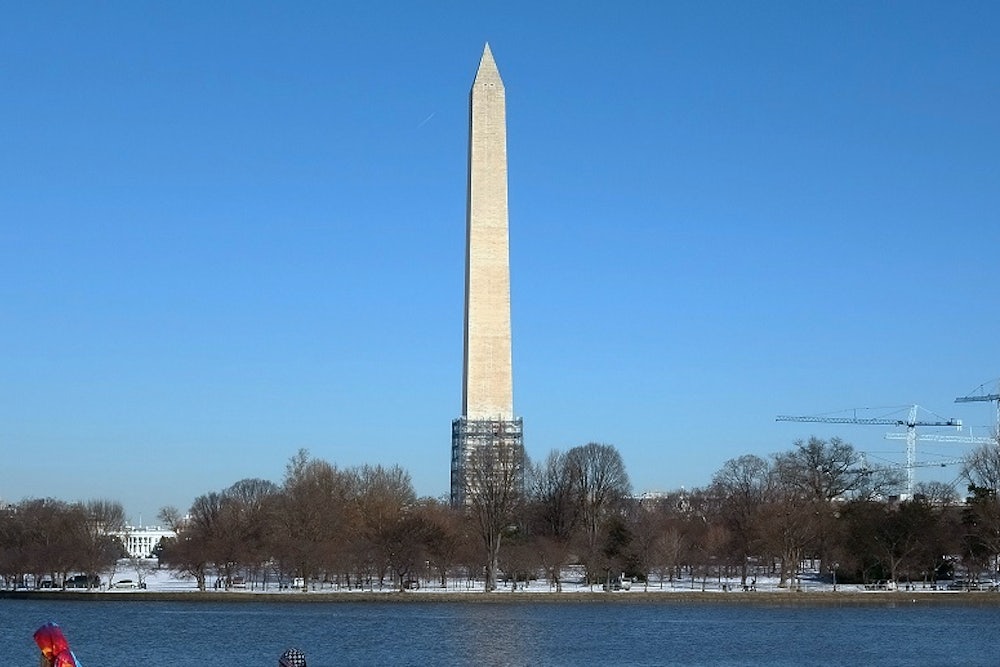One of the pleasures of D.C., for tourists and residents alike, is its lack of suffocating skyscrapers. The Washington Monument is visible throughout nearly the entire city. But the height restrictions that make these views possible also make it one of the most expensive places to live in America—and D.C. just blew a great chance to reduce those exorbitant housing costs.
Current housing regulations in the District date back to 1899, when Congress passed the Height of Buildings Act that restricted buildings to no more than 110 feet. The law was amended in 1910 to allow commercial buildings up to 130 feet, while residential ones are generally restricted to 90 feet. There are a few exceptions depending on location, but those are the basics.
In July 2012, Congressman Darrell Issa, as chairman of the House Oversight Committee—which also has jurisdiction over D.C. in the House—requested that the federal National Capital Planning Commission and D.C.'s Office of Planning review the Height Act and issue a proposal to improve it. Last year, the NCPC and D.C. each came to different conclusions. The District wanted to allow taller buildings in the L’Enfant area and, more importantly, take charge of housing regulations elsewhere in the city. The NCPC proposed a minor tweak to the rules regarding penthouses, but wanted Congress to retain power over D.C.’s housing regulations.
Even if Congress had passed the Office of Planning’s proposal, any changes to housing regulations would still have had to be approved by D.C.’s Zoning Commission—of which two of five members are appointed by the federal government. Issa even mocked District council members who supported the NCPC proposal in a hearing in December, saying, “I did not expect, for the first time ever, to have people say, 'Please don't give me authority. I can't be trusted.'"
Despite that, the NCPC’s recommendations won the day. Issa’s committee passed them in March, the full House passed them at the end of April, and the Senate approved of them by a unanimous consent agreement on Tuesday. They now head to President Obama's desk.
Last fall, when the Office of Planning received comments on its proposal, many residents opposed it out of fear that changing the Height Act would turn D.C. into New York City. But there is no reason skyscrapers must fill the skyline (although one could muster a strong argument for them). D.C. could substantially raise its height restrictions while retaining its small-city feel and reducing rents.
Zillow, a real-estate database, rates D.C. as the seventh-most expensive metro area in the country for residential renters. Office rents are third-highest in the U.S, according to commercial real estate firm Cassidy Turley. Increasing the supply of housing would bring down these rents significantly. That leaves more money in consumers’ pockets to spend on goods and services and more money with companies to boost wages or invest. That means more jobs, including many from the construction boom that would result from a relaxation of height restrictions. The increased density would lead to a larger underlying tax base and boost revenue to put toward city services. And, as Matt Yglesias has often written, allowing companies to cluster near each other has significant economic benefits.
It’s easy to get lost in the policy arguments in favor of reducing D.C.’s height restrictions. It’s a lot harder to convince people of those benefits. D.C. residents love the city's sightlines and sunlight—and landlords and homeowners hate seeing rents and home prices go down. But the current housing regulations have an immense human cost. In 2009, the District started a program called the rapid rehousing program with stimulus funding that put people up in apartments for around four months to get them on their feet. After the stimulus funding ran out, the city wanted to keep the program running, but quickly discovered that the city’s housing costs were too great—they had funding to house people, but couldn’t find enough affordable units. Thanks to the NCPC, that problem isn’t going away.
